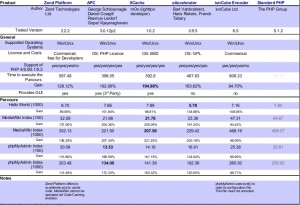所有的数学函数在一个出错的情况下返回NULL。
–
单目减。改变参数的符号。
mysql> select – 2;
注意,如果这个操作符与一个BIGINT使用,返回值是一个BIGINT!这意味着你应该避免在整数上使用-,那可能有值-2^63!
ABS(X)
返回X的绝对值。
mysql> select ABS(2);
-> 2
mysql> select ABS(-32);
-> 32
该功能可安全用于BIGINT值。
SIGN(X)
返回参数的符号,为-1、0或1,取决于X是否是负数、零或正数。
mysql> select SIGN(-32);
-> -1
mysql> select SIGN(0);
-> 0
mysql> select SIGN(234);
-> 1
MOD(N,M)
%
模 (类似C中的%操作符)。返回N被M除的余数。
mysql> select MOD(234, 10);
-> 4
mysql> select 253 % 7;
-> 1
mysql> select MOD(29,9);
-> 2
这个函数可安全用于BIGINT值。
FLOOR(X)
返回不大于X的最大整数值。
mysql> select FLOOR(1.23);
-> 1
mysql> select FLOOR(-1.23);
-> -2
注意返回值被变换为一个BIGINT!
CEILING(X)
返回不小于X的最小整数值。
mysql> select CEILING(1.23);
-> 2
mysql> select CEILING(-1.23);
-> -1
注意返回值被变换为一个BIGINT!
ROUND(X)
返回参数X的四舍五入的一个整数。
mysql> select ROUND(-1.23);
-> -1
mysql> select ROUND(-1.58);
-> -2
mysql> select ROUND(1.58);
-> 2
注意返回值被变换为一个BIGINT!
ROUND(X,D)
返回参数X的四舍五入的有D为小数的一个数字。如果D为0,结果将没有小数点或小数部分。
mysql> select ROUND(1.298, 1);
-> 1.3
mysql> select ROUND(1.298, 0);
-> 1
注意返回值被变换为一个BIGINT!
EXP(X)
返回值e(自然对数的底)的X次方。
mysql> select EXP(2);
-> 7.389056
mysql> select EXP(-2);
-> 0.135335
LOG(X)
返回X的自然对数。
mysql> select LOG(2);
-> 0.693147
mysql> select LOG(-2);
-> NULL
如果你想要一个数字X的任意底B的对数,使用公式LOG(X)/LOG(B)。
LOG10(X)
返回X的以10为底的对数。
mysql> select LOG10(2);
-> 0.301030
mysql> select LOG10(100);
-> 2.000000
mysql> select LOG10(-100);
-> NULL
POW(X,Y)
POWER(X,Y)
返回值X的Y次幂。
mysql> select POW(2,2);
-> 4.000000
mysql> select POW(2,-2);
-> 0.250000
SQRT(X)
返回非负数X的平方根。
mysql> select SQRT(4);
-> 2.000000
mysql> select SQRT(20);
-> 4.472136
PI()
返回PI的值(圆周率)。
mysql> select PI();
-> 3.141593
COS(X)
返回X的余弦, 在这里X以弧度给出。
mysql> select COS(PI());
-> -1.000000
SIN(X)
返回X的正弦值,在此X以弧度给出。
mysql> select SIN(PI());
-> 0.000000
TAN(X)
返回X的正切值,在此X以弧度给出。
mysql> select TAN(PI()+1);
-> 1.557408
ACOS(X)
返回X反余弦,即其余弦值是X。如果X不在-1到1的范围,返回NULL。
mysql> select ACOS(1);
-> 0.000000
mysql> select ACOS(1.0001);
-> NULL
mysql> select ACOS(0);
-> 1.570796
ASIN(X)
返回X反正弦值,即其正弦值是X。L如果X不在-1到1的范围,返回NULL。
mysql> select ASIN(0.2);
-> 0.201358
mysql> select ASIN(‘foo’);
-> 0.000000
ATAN(X)
返回X的反正切值,即其正切值是X。
mysql> select ATAN(2);
-> 1.107149
mysql> select ATAN(-2);
-> -1.107149
ATAN2(X,Y)
返回2个变量X和Y的反正切。它类似于计算Y/X的反正切,除了两个参数的符号被用来决定结果的象限。
mysql> select ATAN(-2,2);
-> -0.785398
mysql> select ATAN(PI(),0);
-> 1.570796
COT(X)
返回X的余切。
mysql> select COT(12);
-> -1.57267341
mysql> select COT(0);
-> NULL
RAND()
RAND(N)
返回在范围0到1.0内的随机浮点值。如果一个整数参数N被指定,它被用作种子值。
mysql> select RAND();
-> 0.5925
mysql> select RAND(20);
-> 0.1811
mysql> select RAND(20);
-> 0.1811
mysql> select RAND();
-> 0.2079
mysql> select RAND();
-> 0.7888
你不能在一个ORDER BY子句用RAND()值使用列,因为ORDER BY将重复计算列多次。然而在MySQL3.23中,你可以做: SELECT * FROM table_name ORDER BY RAND(),这是有利于得到一个来自SELECT * FROM table1,table2 WHERE a=b AND c
LEAST(X,Y,…)
有2和2个以上的参数,返回最小(最小值)的参数。参数使用下列规则进行比较:
如果返回值被使用在一个INTEGER上下文,或所有的参数都是整数值,他们作为整数比较。
如果返回值被使用在一个REAL上下文,或所有的参数是实数值,他们作为实数比较。
如果任何参数是一个大小敏感的字符串,参数作为大小写敏感的字符串被比较。
在其他的情况下,参数作为大小写无关的字符串被比较。
mysql> select LEAST(2,0);
-> 0
mysql> select LEAST(34.0,3.0,5.0,767.0);
-> 3.0
mysql> select LEAST(“B”,”A”,”C”);
-> “A”
在MySQL 3.22.5以前的版本,你可以使用MIN()而不是LEAST。
GREATEST(X,Y,…)
返回最大(最大值)的参数。参数使用与LEAST一样的规则进行比较。
mysql> select GREATEST(2,0);
-> 2
mysql> select GREATEST(34.0,3.0,5.0,767.0);
-> 767.0
mysql> select GREATEST(“B”,”A”,”C”);
-> “C”
在MySQL在 3.22.5 以前的版本, 你能使用MAX()而不是GREATEST.
DEGREES(X)
返回参数X,从弧度变换为角度。
mysql> select DEGREES(PI());
-> 180.000000
RADIANS(X)
返回参数X,从角度变换为弧度。
mysql> select RADIANS(90);
-> 1.570796
TRUNCATE(X,D)
返回数字X,截断为D位小数。如果D为0,结果将没有小数点或小数部分。
mysql> select TRUNCATE(1.223,1);
-> 1.2
mysql> select TRUNCATE(1.999,1);
-> 1.9
mysql> select TRUNCATE(1.999,0);
-> 1
